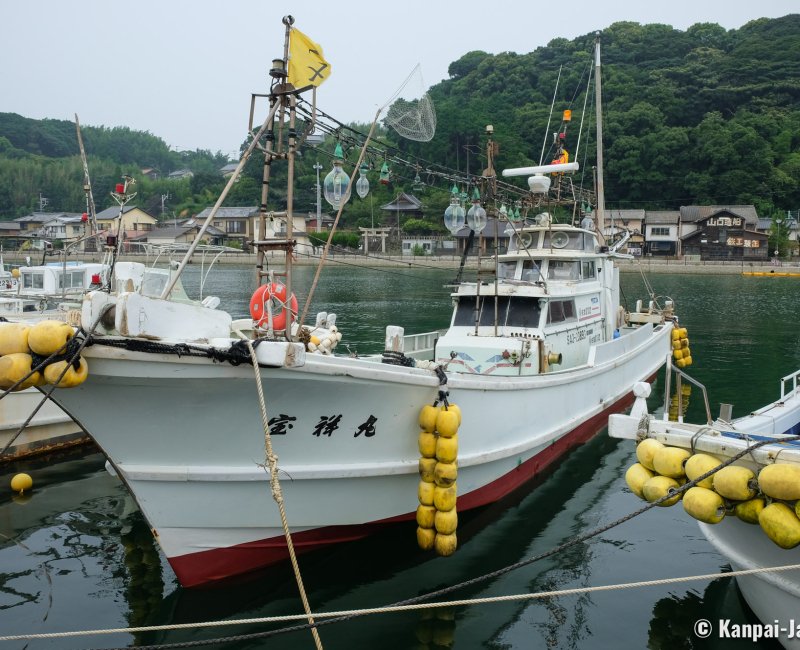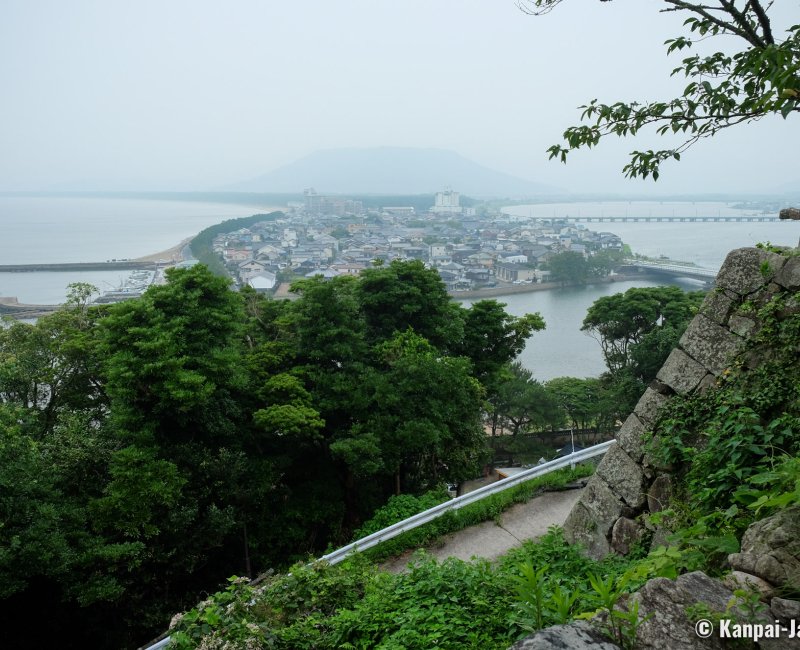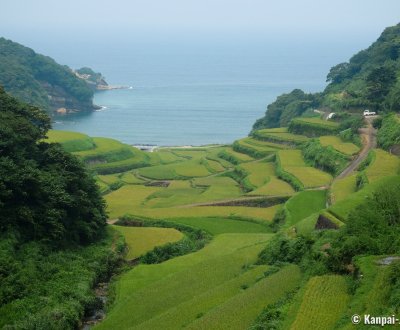Karatsu
The Coastal Feudal Town in the North of Saga
Karatsu is a Japanese city located on the seaside in the north of Saga Prefecture, about 50 kilometers west to Fukuoka on Kyushu Island. This former castle-town was an important Japanese port to trade with China and Korea. Nowadays, its displays the picturesque beauty of its natural and rural landscapes.
Nestled on the north-western coast of Kyushu Island, Karatsu has long been facing the Asian neighbors. It is by the way the closest Japanese city to South Korea’s Busan and at the times of discussions for a Japan–Korea Undersea Tunnel, it was chosen as the place where should have emerged the structure. The kanji used to write its name also underline the characteristics of its history since its origins:
- 唐 kara is a reference to continental Asia, and,
- 津 tsu could be translated as "port".
The Asian continent in view
The city first developed along its northern facade, on the Higashi-Matsuura peninsula, a very indented ria coast that could therefore accommodate sea traffic to a certain extent. Karatsu quickly became one of Japan’s most important ports to trade with China and Korea. This geographic closeness also enticed the ruling power to invade Asia. Built in 1592 under the leadership of Toyotomi Hideyoshi (1537 - 1598), Nagoya Castle 🏯 (名護屋城) was the base camp of the unsuccessful Japanese invasions of Korea until Hideyoshi’s death. It was completely dismantled afterwards.
Today, we recommend discovering the small Yobuko port village, and especially its morning market called Yobuko Asaichi (呼子朝市). On 200 meters, fresh fish and vegetable stalls are managed by lovely grandmas who are keen on chatting with the passersby. The squid fished in the coastal waters is the local specialty, as well as the kawaii mascot of the market. Visitors can also cruise aboard whale-shaped boats to watch the rocky cliffs’ peculiar geology from the sea.

In the green valleys inland, the rice terraces reveal the picturesque beauty of the Higashi-Matsuura Peninsula. This landscape, which is more typical of South-East Asia rather than of the Japanese archipelago, reminds again of the Karatsu’s close relationship with the continent. There are 2 particularly remarkable sites that belong to Japan's Top 100 Terraced Rice Paddies:
- Hamanoura no Tanada (浜野浦の棚田) with rice fields arranged in a stairway facing the Genkai sea. The depth of these paddies is remarkable and the place is enjoyable for its romanticism at sunset.
- Oura no Tanada (大浦の棚田) whose rice paddies cover the hill down to a lovely fishing port in Imari Bay.
In spring, from late April to early May, at the time of seedlings planting, the flooded fields marvelously reflect the colors of the sky. A heritage of the past, these rice paddies were planted several centuries ago, when rice cultivation was a guarantee of prosperity for the daimyo lords and theirs lands.
Karatsu Castle overlooking the bay
Karatsu’s feudal domain appeared in the early Edo period (1603 - 1868) with the building of its castle Karatsu-jo (唐津城) that started in 1602, and was completed 6 years later in 1608. Located above the water, the castle’s foundations stand on Mount Mitsushima on a site that was originally surrounded on each side by a large pine forest. Envisioned as a bird spreading its wings, it is also called Maizuru-jo (舞鶴城), that is to say "the dancing crane’s castle".
The urban center superseded the forest and the feudal grounds are easy to reach walking from the main JR station. The best period to visit the castle is spring, with the sakura 🌸 blooming (in late March) first, followed by the wisteria festival (from mid-April to early May) .
Rebuilt in 1966, the current keep is opened to the public. The first floors present the history of the castle as well as the successive ruling clans, from the Terazawa to the Ogasawara. An exhibition space is dedicated to the Karatsu ware, a famous ceramic originating from the Hizen province (now Saga and Nagasaki prefectures). The upper floor (5F) has a panoramic observatory on Karatsu Bay.

From there, one can have a glimpse on the surrounding sand beaches 🏖, that are open to swimming in summer, as well as on Maizuru Bridge crossing the mouth of Matsuura River. Further away, one can also notice a dark green stripe hugging the bay on 4 kilometers. Overlooked by Mount Kagamiyama, it is the last feudal pine tree forest called Niji no Matsubara (虹の松原), planted 360 years ago by lord Terazawa as a protection against the strong winds and the tides of Karatsu Bay. It is crossed by the road 347, that connects Fukuoka by car 🚙.
Lastly, natural landscape lovers should go to Mikaeri no Taki Falls (見帰りの滝) in Ochi, in the south of the city center. A short hike leads to the foot of 2 waterfalls symbolizing the male-female couple. The best seasons to visit the site are:
- In June, during the blooming of the hundreds of hydrangeas of several species growing along the Ikisa-gawa river ; then,
- In autumn, when the tree foliage changes color.
A former gateway for exchanges with continental Asia culture, Karatsu is a small quiet town surrounded by a lush nature. We recommend discovering the city for sightseers traveling by car on Kyushu Island, especially to move around the Higashi-Matsuura peninsula. The great Karatsu Kunchi festival takes place from November 2 to 4 and attracts each year several hundreds of thousands spectators who come to admire the parade of the 14 wonderful and authentic hikiyama floats.

